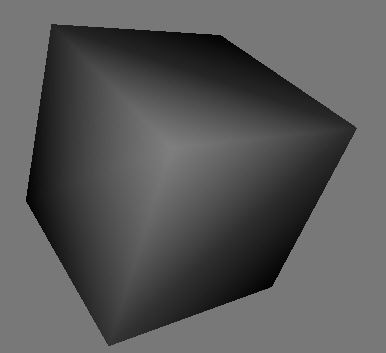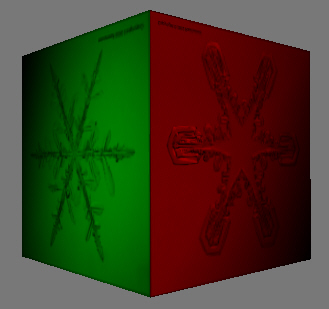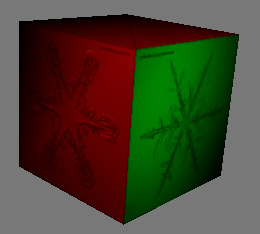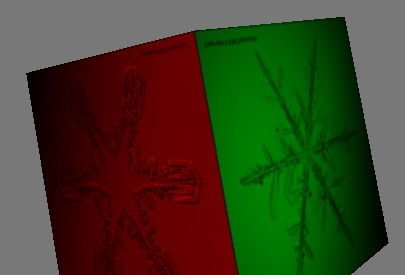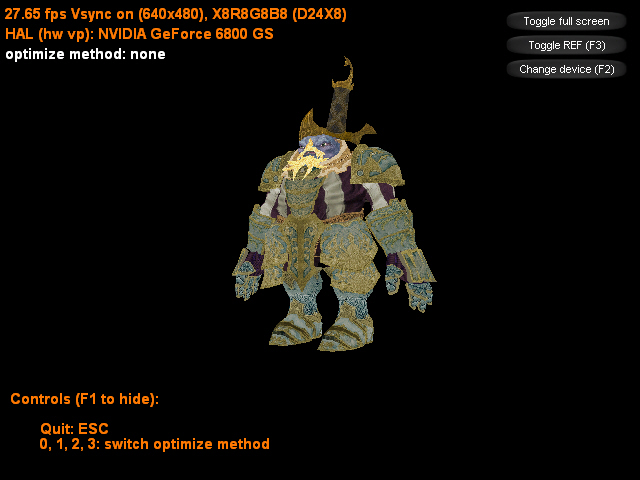-- 作者:卷积内核
-- 发布时间:12/15/2008 3:29:00 PM
--
主程序:
#include "dxstdafx.h"
#include "resource.h" #pragma warning(disable : 4127 4995) #define IDC_TOGGLE_FULLSCREEN 1
#define IDC_TOGGLE_REF 2
#define IDC_CHANGE_DEVICE 3 #define OPT_NONE 0
#define OPT_ATTR_SORT 1
#define OPT_STRIP_REORDER 2
#define OPT_VERTEX_CACHE 3 #define release_com(p) do { if(p) { (p)->Release(); (p) = NULL; } } while(0) ID3DXFont* g_font;
ID3DXSprite* g_text_sprite;
bool g_show_help = true; CDXUTDialogResourceManager g_dlg_resource_manager;
CD3DSettingsDlg g_settings_dlg;
CDXUTDialog g_button_dlg; ID3DXMesh* g_mesh;
D3DMATERIAL9* g_mesh_materials;
IDirect3DTexture9** g_mesh_textures;
DWORD g_num_materials;
ID3DXBuffer* g_adj_buffer; ID3DXMesh* g_mesh_attr_sort;
ID3DXMesh* g_mesh_strip_reorder;
ID3DXMesh* g_mesh_vertex_cache;
WCHAR g_opt_info[256];
int g_render_flag = OPT_NONE; //--------------------------------------------------------------------------------------
// Rejects any devices that aren't acceptable by returning false
//--------------------------------------------------------------------------------------
bool CALLBACK IsDeviceAcceptable( D3DCAPS9* pCaps, D3DFORMAT AdapterFormat,
D3DFORMAT BackBufferFormat, bool bWindowed, void* pUserContext )
{
// Typically want to skip backbuffer formats that don't support alpha blending IDirect3D9* pD3D = DXUTGetD3DObject(); if( FAILED( pD3D->CheckDeviceFormat( pCaps->AdapterOrdinal, pCaps->DeviceType, AdapterFormat,
D3DUSAGE_QUERY_POSTPIXELSHADER_BLENDING, D3DRTYPE_TEXTURE, BackBufferFormat ) ) )
return false; return true;
}
//--------------------------------------------------------------------------------------
// Before a device is created, modify the device settings as needed.
//--------------------------------------------------------------------------------------
bool CALLBACK ModifyDeviceSettings( DXUTDeviceSettings* pDeviceSettings, const D3DCAPS9* pCaps, void* pUserContext )
{
// If video card does not support hardware vertex processing, then uses sofaware vertex processing.
if((pCaps->DevCaps & D3DDEVCAPS_HWTRANSFORMANDLIGHT) == 0)
pDeviceSettings->BehaviorFlags = D3DCREATE_SOFTWARE_VERTEXPROCESSING; static bool is_first_time = true; if(is_first_time)
{
is_first_time = false; // if using reference device, then pop a warning message box.
if(pDeviceSettings->DeviceType == D3DDEVTYPE_REF)
DXUTDisplaySwitchingToREFWarning();
} return true;
} //--------------------------------------------------------------------------------------
// Remove path from fullname, and convert filename from multibyte to wchar.
//--------------------------------------------------------------------------------------
void RemovePathFromFileName(LPSTR fullname, LPWSTR wfilename)
{
WCHAR wbuf[MAX_PATH] = {0};
MultiByteToWideChar(CP_ACP, 0, fullname, -1, wbuf, MAX_PATH); LPWSTR w_last_back_slash = wcsrchr(wbuf, '\\'); if(w_last_back_slash)
lstrcpy(wfilename, ++w_last_back_slash);
else
lstrcpy(wfilename, wbuf);
}
//--------------------------------------------------------------------------------------
// Create any D3DPOOL_MANAGED resources here
//--------------------------------------------------------------------------------------
HRESULT CALLBACK OnCreateDevice( IDirect3DDevice9* pd3dDevice,
const D3DSURFACE_DESC* pBackBufferSurfaceDesc,
void* pUserContext )
{
HRESULT hr; V_RETURN(g_dlg_resource_manager.OnCreateDevice(pd3dDevice));
V_RETURN(g_settings_dlg.OnCreateDevice(pd3dDevice)); D3DXCreateFont(pd3dDevice, 18, 0, FW_BOLD, 1, FALSE, DEFAULT_CHARSET, OUT_DEFAULT_PRECIS, DEFAULT_QUALITY,
DEFAULT_PITCH | FF_DONTCARE, L"Arial", &g_font); ID3DXBuffer* material_buffer; V_RETURN(D3DXLoadMeshFromXW(L"Dwarf.x", D3DXMESH_MANAGED, pd3dDevice, &g_adj_buffer, &material_buffer, NULL,
&g_num_materials, &g_mesh)); D3DXMATERIAL* xmaterials = (D3DXMATERIAL*) material_buffer->GetBufferPointer();
g_mesh_materials = new D3DMATERIAL9[g_num_materials];
g_mesh_textures = new IDirect3DTexture9*[g_num_materials]; for(DWORD i = 0; i < g_num_materials; i++)
{
g_mesh_materials[i] = xmaterials[i].MatD3D;
g_mesh_materials[i].Ambient = g_mesh_materials[i].Diffuse; WCHAR wfilename[256];
RemovePathFromFileName(xmaterials[i].pTextureFilename, wfilename); g_mesh_textures[i] = NULL; if(xmaterials[i].pTextureFilename != NULL && lstrlen(wfilename) > 0)
{
V_RETURN(D3DXCreateTextureFromFileW(pd3dDevice, wfilename, &g_mesh_textures[i]));
}
}
material_buffer->Release(); lstrcpy(g_opt_info, L"optimize method: none"); DWORD* adj_in = (DWORD*) g_adj_buffer->GetBufferPointer(); V_RETURN(g_mesh->Optimize(D3DXMESHOPT_ATTRSORT | D3DXMESH_MANAGED, adj_in, NULL, NULL, NULL,
&g_mesh_attr_sort)); V_RETURN(g_mesh->Optimize(D3DXMESHOPT_STRIPREORDER | D3DXMESH_MANAGED, adj_in, NULL, NULL, NULL,
&g_mesh_strip_reorder));
V_RETURN(g_mesh->Optimize(D3DXMESHOPT_VERTEXCACHE | D3DXMESH_MANAGED, adj_in, NULL, NULL, NULL,
&g_mesh_vertex_cache)); return S_OK;
}
//--------------------------------------------------------------------------------------
// Create any D3DPOOL_DEFAULT resources here
//--------------------------------------------------------------------------------------
HRESULT CALLBACK OnResetDevice( IDirect3DDevice9* pd3dDevice,
const D3DSURFACE_DESC* pBackBufferSurfaceDesc,
void* pUserContext )
{
HRESULT hr; V_RETURN(g_dlg_resource_manager.OnResetDevice());
V_RETURN(g_settings_dlg.OnResetDevice());
V_RETURN(g_font->OnResetDevice());
V_RETURN(D3DXCreateSprite(pd3dDevice, &g_text_sprite)); // set dialog position and size g_button_dlg.SetLocation(pBackBufferSurfaceDesc->Width - 170, 0);
g_button_dlg.SetSize(170, 170); // setup view matrix D3DXMATRIX mat_view;
D3DXVECTOR3 eye(0.0f, 0.0f, -4.0f);
D3DXVECTOR3 at(0.0f, 0.0f, 0.0f);
D3DXVECTOR3 up(0.0f, 1.0f, 0.0f); D3DXMatrixLookAtLH(&mat_view, &eye, &at, &up);
pd3dDevice->SetTransform(D3DTS_VIEW, &mat_view); // set projection matrix
D3DXMATRIX mat_proj;
float aspect = (float)pBackBufferSurfaceDesc->Width / pBackBufferSurfaceDesc->Height;
D3DXMatrixPerspectiveFovLH(&mat_proj, D3DX_PI/4, aspect, 1.0f, 100.0f);
pd3dDevice->SetTransform(D3DTS_PROJECTION, &mat_proj); pd3dDevice->SetRenderState(D3DRS_AMBIENT, 0xFFFFFFFF); return S_OK;
} //--------------------------------------------------------------------------------------
// Release resources created in the OnResetDevice callback here
//--------------------------------------------------------------------------------------
void CALLBACK OnLostDevice( void* pUserContext )
{
g_dlg_resource_manager.OnLostDevice();
g_settings_dlg.OnLostDevice();
g_font->OnLostDevice(); release_com(g_text_sprite);
}
//--------------------------------------------------------------------------------------
// Release resources created in the OnCreateDevice callback here
//--------------------------------------------------------------------------------------
void CALLBACK OnDestroyDevice( void* pUserContext )
{
g_dlg_resource_manager.OnDestroyDevice();
g_settings_dlg.OnDestroyDevice(); delete[] g_mesh_materials;
g_mesh_materials = NULL; if(g_mesh_textures)
{
for(DWORD i = 0; i < g_num_materials; i++)
release_com(g_mesh_textures[i]); delete[] g_mesh_textures;
g_mesh_textures = NULL;
} release_com(g_font);
release_com(g_adj_buffer);
release_com(g_mesh);
release_com(g_mesh_attr_sort);
release_com(g_mesh_strip_reorder);
release_com(g_mesh_vertex_cache);
} //--------------------------------------------------------------------------------------
// Handle updates to the scene
//--------------------------------------------------------------------------------------
void CALLBACK OnFrameMove( IDirect3DDevice9* pd3dDevice, double fTime, float fElapsedTime, void* pUserContext )
{
D3DXMATRIX mat_world, mat_translation, mat_rotation; D3DXMatrixTranslation(&mat_translation, 0, -0.7f, 0);
D3DXMatrixRotationY(&mat_rotation, timeGetTime() / 1000.0f);
mat_world = mat_translation * mat_rotation; pd3dDevice->SetTransform(D3DTS_WORLD, &mat_world);
} //--------------------------------------------------------------------------------------
// Render the helper information
//--------------------------------------------------------------------------------------
void RenderText()
{
CDXUTTextHelper text_helper(g_font, g_text_sprite, 20);
text_helper.Begin(); // show frame and device states
text_helper.SetInsertionPos(5, 5);
text_helper.SetForegroundColor( D3DXCOLOR(1.0f, 0.475f, 0.0f, 1.0f) );
text_helper.DrawTextLine( DXUTGetFrameStats(true) );
text_helper.DrawTextLine( DXUTGetDeviceStats() ); // show other simple information
text_helper.SetForegroundColor( D3DXCOLOR(1.0f, 1.0f, 1.0f, 1.0f) );
text_helper.DrawTextLine(g_opt_info); // show helper information
const D3DSURFACE_DESC* surface_desc = DXUTGetBackBufferSurfaceDesc(); if(g_show_help)
{
text_helper.SetInsertionPos(10, surface_desc->Height - 15 * 6);
text_helper.SetForegroundColor( D3DXCOLOR(1.0f, 0.475f, 0.0f, 1.0f) );
text_helper.DrawTextLine(L"Controls (F1 to hide):");
text_helper.SetInsertionPos(40, surface_desc->Height - 15 * 4);
text_helper.DrawTextLine(L"Quit: ESC"); text_helper.SetInsertionPos(40, surface_desc->Height - 15 * 3);
text_helper.DrawTextLine(L"0, 1, 2, 3: switch optimize method");
}
else
{
text_helper.SetInsertionPos(10, surface_desc->Height - 15 * 4);
text_helper.SetForegroundColor( D3DXCOLOR(1.0f, 1.0f, 1.0f, 1.0f) );
text_helper.DrawTextLine(L"Press F1 for help");
} text_helper.End();
} //--------------------------------------------------------------------------------------
// Render the scene
//--------------------------------------------------------------------------------------
void CALLBACK OnFrameRender( IDirect3DDevice9* pd3dDevice, double fTime, float fElapsedTime, void* pUserContext )
{
HRESULT hr; if(g_settings_dlg.IsActive())
{
g_settings_dlg.OnRender(fElapsedTime);
return;
} // Clear the render target and the zbuffer
V( pd3dDevice->Clear(0, NULL, D3DCLEAR_TARGET | D3DCLEAR_ZBUFFER, D3DCOLOR_ARGB(0, 0, 0, 0), 1.0f, 0) ); // Render the scene
if( SUCCEEDED( pd3dDevice->BeginScene() ) )
{
for(DWORD i = 0; i < g_num_materials; i++)
{
pd3dDevice->SetMaterial(&g_mesh_materials[i]);
pd3dDevice->SetTexture(0, g_mesh_textures[i]); switch(g_render_flag)
{
case OPT_NONE:
g_mesh->DrawSubset(i);
break; case OPT_ATTR_SORT:
g_mesh_attr_sort->DrawSubset(i);
break; case OPT_STRIP_REORDER:
g_mesh_strip_reorder->DrawSubset(i);
break; case OPT_VERTEX_CACHE:
g_mesh_vertex_cache->DrawSubset(i);
break;
}
} RenderText(); V(g_button_dlg.OnRender(fElapsedTime)); V( pd3dDevice->EndScene() );
}
}
//--------------------------------------------------------------------------------------
// Handle messages to the application
//--------------------------------------------------------------------------------------
LRESULT CALLBACK MsgProc( HWND hWnd, UINT uMsg, WPARAM wParam, LPARAM lParam,
bool* pbNoFurtherProcessing, void* pUserContext )
{
*pbNoFurtherProcessing = g_dlg_resource_manager.MsgProc(hWnd, uMsg, wParam, lParam);
if(*pbNoFurtherProcessing)
return 0; if(g_settings_dlg.IsActive())
{
g_settings_dlg.MsgProc(hWnd, uMsg, wParam, lParam);
return 0;
} *pbNoFurtherProcessing = g_button_dlg.MsgProc(hWnd, uMsg, wParam, lParam);
if(*pbNoFurtherProcessing)
return 0; return 0;
}
//--------------------------------------------------------------------------------------
// Handle keybaord event
//--------------------------------------------------------------------------------------
void CALLBACK OnKeyboardProc(UINT charater, bool is_key_down, bool is_alt_down, void* user_context)
{
if(is_key_down)
{
switch(charater)
{
case VK_F1:
g_show_help = !g_show_help;
break; case 48: // press key "0"
g_render_flag = OPT_NONE;
lstrcpy(g_opt_info, L"optimize method: none");
break; case 49: // press key "1"
g_render_flag = OPT_ATTR_SORT;
lstrcpy(g_opt_info, L"optimize method: D3DXMESHOPT_ATTRSORT");
break; case 50: // press key "2"
g_render_flag = OPT_STRIP_REORDER;
lstrcpy(g_opt_info, L"optimize method: D3DXMESHOPT_STRIPREORDER");
break; case 51: // press key "3"
g_render_flag = OPT_VERTEX_CACHE;
lstrcpy(g_opt_info, L"optimize method: D3DXMESHOPT_VERTEXCACHE");
break;
}
}
} //--------------------------------------------------------------------------------------
// Handle events for controls
//--------------------------------------------------------------------------------------
void CALLBACK OnGUIEvent(UINT event, int control_id, CDXUTControl* control, void* user_context)
{
switch(control_id)
{
case IDC_TOGGLE_FULLSCREEN:
DXUTToggleFullScreen();
break; case IDC_TOGGLE_REF:
DXUTToggleREF();
break; case IDC_CHANGE_DEVICE:
g_settings_dlg.SetActive(true);
break;
}
} //--------------------------------------------------------------------------------------
// Initialize dialogs
//--------------------------------------------------------------------------------------
void InitDialogs()
{
g_settings_dlg.Init(&g_dlg_resource_manager);
g_button_dlg.Init(&g_dlg_resource_manager); g_button_dlg.SetCallback(OnGUIEvent); int x = 35, y = 10, width = 125, height = 22; g_button_dlg.AddButton(IDC_TOGGLE_FULLSCREEN, L"Toggle full screen", x, y, width, height);
g_button_dlg.AddButton(IDC_TOGGLE_REF, L"Toggle REF (F3)", x, y += 24, width, height);
g_button_dlg.AddButton(IDC_CHANGE_DEVICE, L"Change device (F2)", x, y += 24, width, height, VK_F2);
} //--------------------------------------------------------------------------------------
// Initialize everything and go into a render loop
//--------------------------------------------------------------------------------------
INT WINAPI WinMain( HINSTANCE, HINSTANCE, LPSTR, int )
{
// Enable run-time memory check for debug builds.
#if defined(DEBUG) | defined(_DEBUG)
_CrtSetDbgFlag( _CRTDBG_ALLOC_MEM_DF | _CRTDBG_LEAK_CHECK_DF );
#endif // Set the callback functions
DXUTSetCallbackDeviceCreated( OnCreateDevice );
DXUTSetCallbackDeviceReset( OnResetDevice );
DXUTSetCallbackDeviceLost( OnLostDevice );
DXUTSetCallbackDeviceDestroyed( OnDestroyDevice );
DXUTSetCallbackMsgProc( MsgProc );
DXUTSetCallbackFrameRender( OnFrameRender );
DXUTSetCallbackFrameMove( OnFrameMove );
DXUTSetCallbackKeyboard(OnKeyboardProc);
// TODO: Perform any application-level initialization here
InitDialogs(); // Initialize DXUT and create the desired Win32 window and Direct3D device for the application
DXUTInit( true, true, true ); // Parse the command line, handle the default hotkeys, and show msgboxes
DXUTSetCursorSettings( true, true ); // Show the cursor and clip it when in full screen
DXUTCreateWindow( L"OptimizedMesh" );
DXUTCreateDevice( D3DADAPTER_DEFAULT, true, 640, 480, IsDeviceAcceptable, ModifyDeviceSettings ); // Start the render loop
DXUTMainLoop(); // TODO: Perform any application-level cleanup here return DXUTGetExitCode();
} [B][URL=http://www.cppblog.com/Files/changingnow/OptimizedMesh.rar]下载示例工程[/URL][/B]
| 